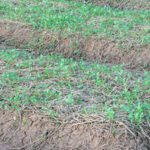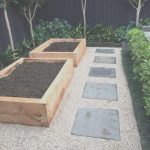Is pressure treated wood safe for vegetable gardens? The safety of materials used in gardening is essential for the well-being of plants and those who consume their produce.
Pressure treated wood is a common choice for building raised beds and structures in vegetable gardens, but it raises concerns about potential risks to the soil, plants, and human health. This article will explore the use of pressure treated wood in vegetable gardens, detailing its manufacturing process, the chemicals used, and its impact on soil and plants.
When it comes to creating a safe environment for growing vegetables, using materials that do not pose any harm is crucial. However, pressure treated wood presents a dilemma due to the potential dangers it may pose to the garden ecosystem and human consumption. Understanding the process and components of pressure treated wood is essential in making an informed decision about its suitability for vegetable gardens.
In this article, we will delve into the details of pressure treated wood – from how it is made to the chemicals used in its treatment. We will also discuss how these chemicals can impact the soil and plants in vegetable gardens, as well as potential health concerns associated with using pressure treated wood in close proximity to edible crops.
Additionally, we will explore alternative materials for building raised beds and structures in vegetable gardens while providing best practices for safely using pressure treated wood if deemed necessary. Stay tuned to gain valuable insights into making informed decisions about material choices in your vegetable garden.
Understanding Pressure Treated Wood
Pressure treated wood is a type of lumber that has been infused with chemicals to improve its resistance to decay and insects. This treatment process involves placing the wood in a pressure chamber and forcing preservatives into the wood fibers.
The most common chemicals used in pressure treated wood include chromated copper arsenate (CCA), alkaline copper quaternary (ACQ), and copper azole. These chemicals are effective at protecting the wood from rotting and insect damage, making pressure treated wood a popular choice for outdoor construction projects, including raised beds in vegetable gardens.
The process of pressure treating wood begins with placing the lumber inside a sealed cylinder known as a retort. The retort is then filled with the preservative solution, which is typically made up of water and various chemical compounds. Once the retort is sealed, it is pressurized to force the solution into the wood under high pressure. This process ensures that the preservatives penetrate deep into the wood fibers, creating a long-lasting resistance to decay and pests.
One important aspect to consider when using pressure treated wood in vegetable gardens is that different types of preservatives can be used in this treatment process. Some of these chemicals may pose potential risks to soil, plants, and human health when used in close proximity to edible crops.
As such, it is essential for gardeners to understand the specific chemicals used in pressure treated wood and their potential implications for vegetable gardening before deciding whether or not to use this material in their garden projects.
- CCP
- ACA
- Copper Azole
Chemicals Used in Pressure Treated Wood
Pressure treated wood is a common choice for outdoor projects, including building raised beds and structures in vegetable gardens. However, there is much debate about whether pressure treated wood is safe for use in vegetable gardens due to the chemicals used in the treatment process.
The most commonly used chemicals in pressure treated wood are copper, chromium, and arsenic. These chemicals are used to protect the wood from decay and insect damage. While this treatment makes the wood more durable, there is concern about the potential risks these chemicals pose to the soil and plants in vegetable gardens.
Copper is known to accumulate in soil over time, which can affect the pH levels and nutrient availability for plants. Chromium can leach into the soil and groundwater from pressure treated wood, posing a risk of contamination.
Arsenic, although less commonly used today due to health concerns, was widely used in older pressure treated wood and is known to be toxic to both humans and plants. Given these potential risks, many gardeners question whether pressure treated wood is safe and suitable for use in their vegetable gardens.
As shown above, pressure treated wood may not be ideal for use in vegetable gardens due to its potential risks to soil and plant health. It’s essential to consider alternative materials that are safer for growing vegetables if one decides against using pressure treated wood. Careful consideration should be given to choose materials that do not pose any harm or health risks when used in vegetable gardens.
| Chemical | Potential Risk |
|---|---|
| Copper | Accumulation in soil affecting pH levels and nutrient availability |
| Chromium | Leaching into soil and groundwater causing contamination |
| Arsenic | Toxicity to both humans and plants if present |
Impact on Soil and Plants
Pressure treated wood is commonly used in construction and landscaping due to its durability and resistance to decay. However, when it comes to using pressure treated wood in vegetable gardens, there are concerns about the potential impact on the soil and plants. Understanding how pressure treated wood can affect the soil and the plants grown in vegetable gardens is crucial for making informed decisions about whether or not to use this material.
Several chemicals are used in the process of treating wood, including chromated copper arsenate (CCA), creosote, and pentachlorophenol. These chemicals are meant to protect the wood from insects, fungi, and decay, but they can leach into the soil over time. As a result, these chemicals may affect the pH levels of the soil and potentially harm beneficial microorganisms that are essential for plant growth.
The presence of these chemicals in the soil can also have direct effects on plants. Some studies have shown that certain vegetables may absorb these chemicals from the soil, leading to potential health risks for human consumption.
Additionally, plants grown in soil that has been contaminated by pressure treated wood may exhibit signs of stress or stunted growth due to the presence of these chemicals. Therefore, it is important to consider these potential repercussions before using pressure treated wood in vegetable gardens.
- Soil contamination with chemicals leached from pressure treated wood
- Potential impact on pH levels and beneficial microorganisms in the soil
- Possible absorption of chemicals by plants and implications for human consumption
Health Concerns
While pressure treated wood is commonly used for outdoor construction projects due to its resistance to decay and insects, there is a growing concern about its safety when used in vegetable gardens. This section will explore the potential health risks of using pressure treated wood in vegetable gardens and the implications for human consumption.
Chemical Leaching
One of the primary concerns with pressure treated wood in vegetable gardens is the leaching of chemicals into the soil. The chemicals used in the treatment process, such as chromated copper arsenate (CCA) or alkaline copper quaternary (ACQ), are known to release toxins over time. These toxins can be absorbed by plants and ultimately make their way into the fruits and vegetables that are consumed, posing a potential health risk to individuals.
Food Contamination
Another issue with using pressure treated wood in vegetable gardens is the risk of food contamination. As plants grow, their roots can come into contact with the chemically-treated wood, leading to potential absorption of harmful substances. When these plants are harvested for consumption, there is a risk that the chemical residues from the pressure treated wood may be present in the edible portions of the plants, leading to direct exposure for individuals who consume them.
Overall Health Implications
The use of pressure treated wood in vegetable gardens raises significant health concerns, especially when considering long-term exposure to potentially harmful chemicals. While research on this topic is ongoing, it is important for individuals to weigh the potential risks before deciding to use pressure treated wood in their vegetable gardens. Considering alternative materials that do not pose these health risks may be a more prudent choice for those looking to ensure safety in their homegrown produce.
Alternative Materials
Pressure treated wood is a popular choice for building raised beds and structures in vegetable gardens due to its durability and resistance to rot and decay. However, concerns have been raised about the safety of using pressure treated wood in close proximity to plants that will be consumed. In light of these concerns, it’s important to consider alternative materials that can be used for constructing raised beds and structures in vegetable gardens.
One alternative to pressure treated wood is cedar or redwood. These types of wood are naturally resistant to decay and insects, making them durable choices for outdoor use. Cedar and redwood also have a beautiful natural appearance that can enhance the aesthetic of a vegetable garden.
Another option is composite lumber, which is made from a mixture of recycled plastic and wood fibers. This material is resistant to rot, warping, and splintering, making it an attractive choice for constructing raised beds and other garden structures. Additionally, composite lumber is available in a variety of colors and textures, allowing for customization in the garden space.
Lastly, untreated pine or spruce can also be used as an alternative to pressure treated wood. While these types of wood may not last as long as cedar or composite lumber, they can still provide a cost-effective solution for building raised beds in vegetable gardens. Plus, untreated pine and spruce are safe options for growing vegetables, alleviating concerns about potential chemical leaching into the soil.
| Alternative Material | Benefits |
|---|---|
| Cedar or Redwood | Naturally resistant to decay and insects; aesthetically pleasing |
| Composite Lumber | Resistant to rot, warping, splintering; available in various colors |
| Untreated Pine or Spruce | Cost-effective; safe for growing vegetables |
Best Practices for Using Pressure Treated Wood
Using pressure treated wood in vegetable gardens can be a cause for concern due to the potential risks associated with the chemicals used in the treatment process. However, if you determine that pressure treated wood is the only viable option for your garden project, there are best practices and tips that can help minimize any potential negative impacts on soil, plants, and human health.
Choose a Safe Wood Type
Not all pressure treated wood is created equal. When selecting pressure treated wood for your vegetable garden, opt for wood that is specifically labeled as safe for use around plants and food crops. Look for labels such as “ACQ-treated” (Alkaline Copper Quaternary) or “CA-C” (Copper Azole), which are considered safer alternatives compared to older formulations of pressure treated wood that contained arsenic or chromium.
Line the Wood
To create an additional barrier between the pressure treated wood and your garden soil, consider lining the interior of raised beds or other structures with heavy-duty plastic sheeting to prevent direct contact between the wood and the soil. This can help minimize leaching of chemicals into the soil while still allowing you to use pressure treated wood if necessary.
Avoid Direct Contact With Edible Parts
If using pressure treated wood for structures such as trellises or fences within your vegetable garden, avoid direct contact between the edible parts of your plants and the treated wood. For example, when building a trellis for tomatoes or cucumbers, ensure that the fruits do not come into contact with the treated wood by using additional barriers such as netting or tying them to non-treated surfaces.
By implementing these best practices, you can mitigate some of the potential risks associated with using pressure treated wood in vegetable gardens. However, it is always advisable to explore alternative materials whenever possible to ensure the safety of your garden environment and the health of those consuming produce grown within it.
Conclusion
In conclusion, the use of pressure treated wood in vegetable gardens is a topic that sparks debate and raises concerns about potential risks to soil, plants, and human health. As explained in this article, pressure treated wood is infused with chemicals such as arsenic, copper, and chromium to extend its lifespan and protect it from decay.
These chemicals can leach into the soil over time and potentially affect the plants grown in vegetable gardens. There are also concerns about the health implications of consuming vegetables that have been grown in soil near pressure treated wood.
While there are no definitive answers to whether pressure treated wood is safe for vegetable gardens, it is important for gardeners to weigh the potential risks and make informed decisions about the materials they use. In some cases, especially when building structures like raised beds, using alternative materials such as cedar or composite lumber may be a safer option.
Additionally, if using pressure treated wood is unavoidable, taking precautions such as lining the inside of raised beds with plastic can help reduce the risk of chemical leaching into the soil.
Ultimately, each gardener must consider their own comfort level with using pressure treated wood and make choices that align with their priorities for food safety and environmental impact. It may also be beneficial to consult local extension offices or agricultural experts for specific guidance based on regional factors. The decision to use pressure treated wood in vegetable gardens should be made carefully after considering all potential risks and taking steps to minimize them.

If you’re looking to get into vegetable gardening, or are just looking for some tips on how to make your current garden better, then you’ve come to the right place! My name is Ethel and I have been gardening for years. In this blog, I’m going to share with you some of my best tips on how to create a successful vegetable garden.





